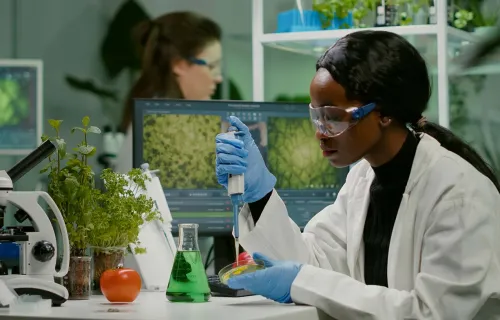Today, many affiliate the word “smart” with technology – smart phones, smart TVs, smart homes, etc. - but is infusing the latest technology in all aspects of life necessarily the smart thing to do? Not always. What is smart is to understand what your highest priorities are and invest in those areas to make improvements that produce maximum results. When you then incorporate technology, it is smart to do it in a way that allows you to leverage it for other purposes.
As incorporating smart technologies into our daily lives has become the norm, so too is the use of technology to optimize functionality in state and local governments. While there is a treasure trove of digital technology that can be infused into government services, doing too much too soon often leads to disappointment, sometimes with costly consequences. It also leaves a convoluted “spaghetti bowl” of technology that is not leveraged, integrated or enabled to benefit other aspects of the community.

Examples of the fallout from premature adoption of smart technology have been seen in communities that rushed to implement mobile apps allowing citizens to report problems such as potholes and broken street lights. Surely, local leaders thought, having citizens help identify where work was needed would be great. Instead, citizens ended up reporting the same problems over and over and became frustrated to discover they couldn’t track the repair status because the mobile app was not integrated with the customer management system. In this example, the intent of the new technology was good, but the delivery lacked vital integration that hindered the optimal user experience.
Now, most localities are integrating these kinds of apps with their back-end systems so citizens not only can report an event, but also can see when the fix will occur and receive notification when the work is completed. In this case, smart is not the mobile app itself, but implementing it in a way that maximizes the citizen’s experience and enables services to improve.
It is easy for communities to look to technology for the quick fix. After all, there are now countless resources including smart conferences and symposiums all over the world demonstrating the art of the possible. Using technology, we can now detect and predict leaks in water pipes, reroute garbage trucks to pick up only full trash cans, deploy driverless cars, and the list goes on and on and on. It’s no surprise that local officials often get excited about the possibilities these new technologies can bring. Finding sustainable funding resources and planning smart implementation, however, isn’t always as easy as it sounds.
Recently, I had the pleasure of meeting with leaders of a small U.S. city who were experiencing an influx of complaints about traffic congestion on a local highway during rush hour. After analyzing the complaint data, GIS data, and data from other sensors, they were able to determine the cause of the increased congestion. They discovered that an elderly man was visiting his doctor several times a week during rush hour, driving extremely slowly on a key commuter route. The city can now decide the best way to address the issue, such as offer a car service or ask the man to change his appointment to non-rush hours or do nothing at all. In this case, the city didn’t have to invest in anything new, they simply exploited the data they already had to discover the issue.
While not everything can be solved with existing data and/or technology, this does demonstrate that smart also means taking advantage of what you already have in place.
The truth is that every community is different so their priorities are going to vary. A community experiencing high population growth may be facing new traffic and congestion problems while another community may be facing environmental or noise pollution as a result of a changing industrial landscape. Each of these communities will have a variety of resources available to help them address these issues using smart technology and data.
Traffic congestion can be tackled by installing sensors, changing lighting sequences, and/or building or widening roads. Sensors can also be used in communities that seem to have an uptick in pollution to capture detailed data on when pollution levels are higher to understand and deal with the source.
Without a doubt, technology exists to help most communities be perceived as smart; however, making strategic investments to solve the highest priority problems is a key to success.
To help in this endeavor, CGI has partnered with Governing Institute to create a practical guide for state and local officials tasked with creating smarter communities. I invite you to download, A Field Guide to Smarter Communities – a strategic, incremental approach to digital, connected and people-centric government, to learn more about how smart technology is being put to work in communities across the U.S. and around the world.





